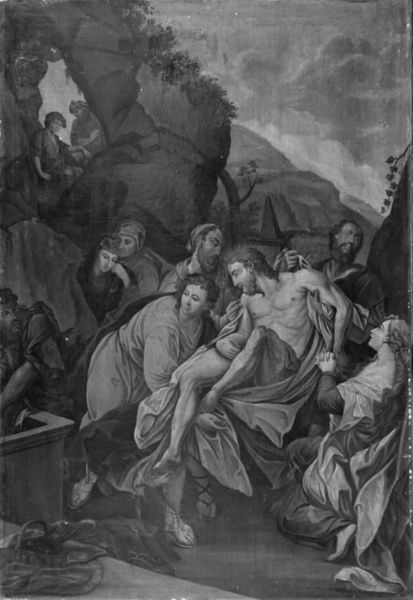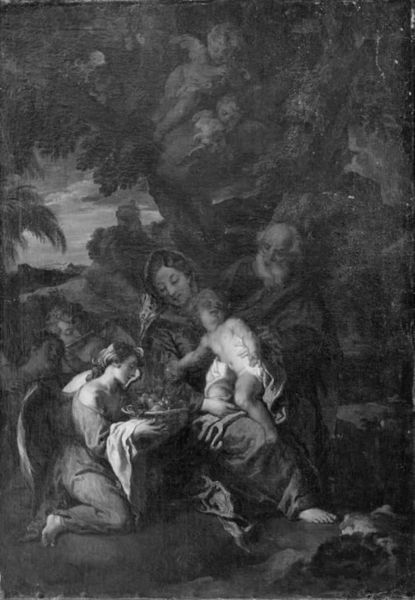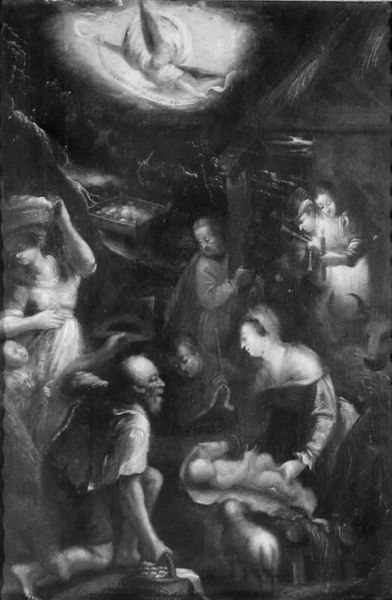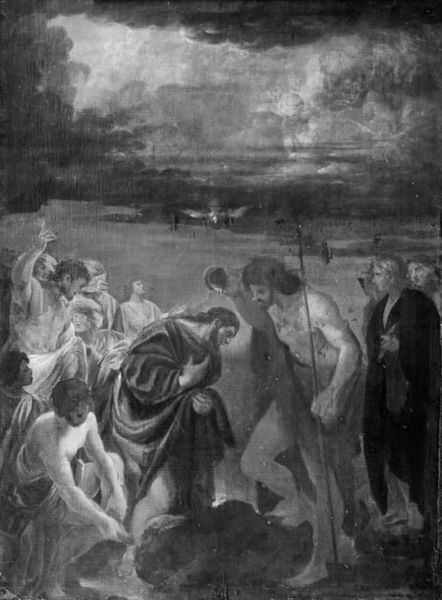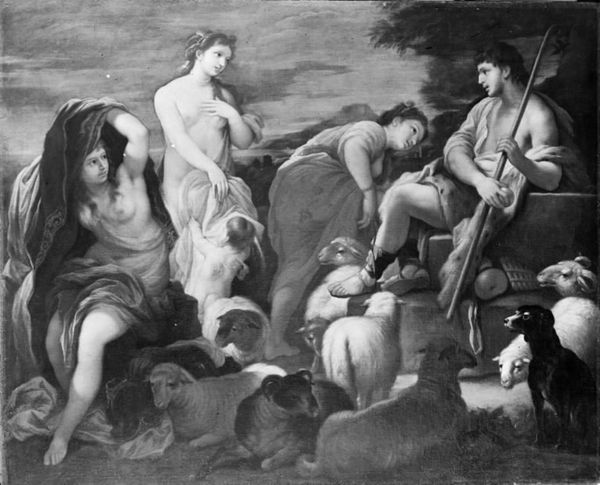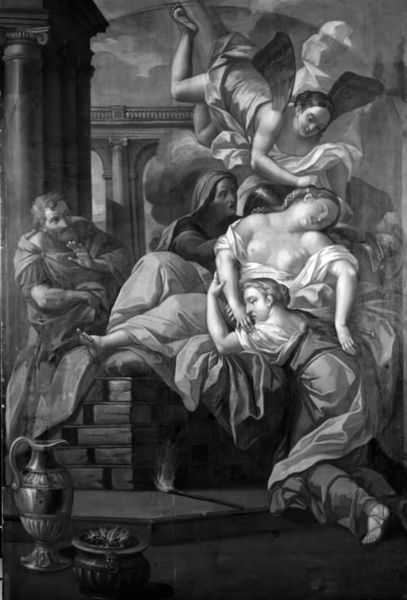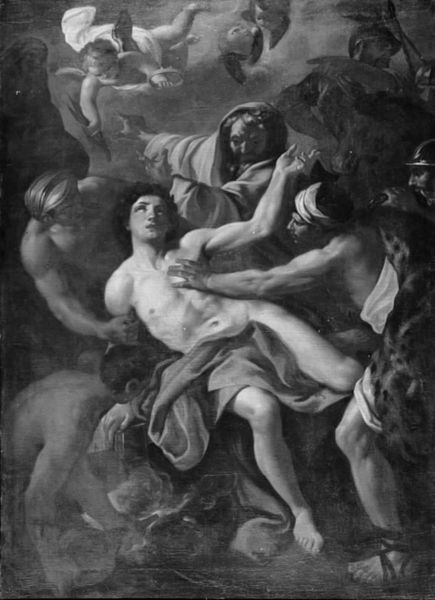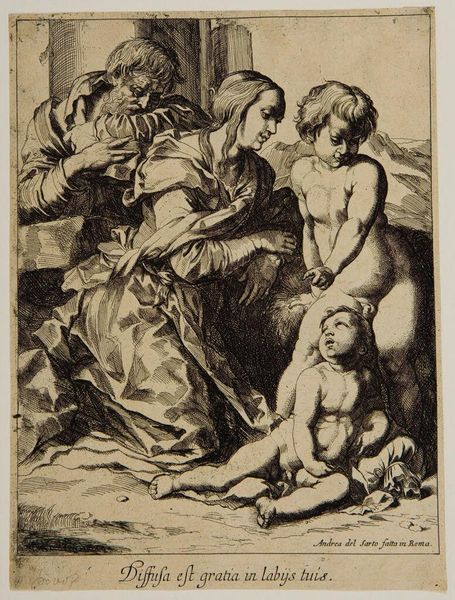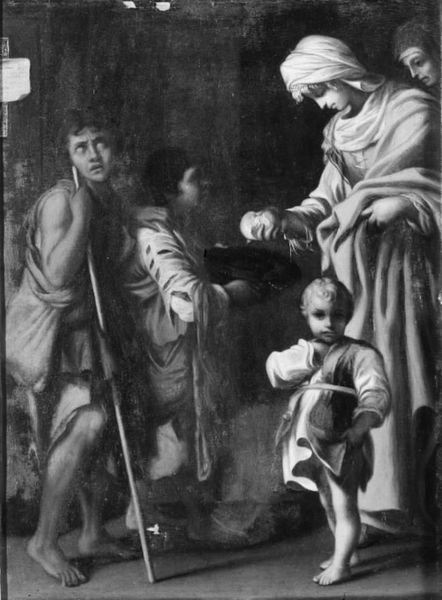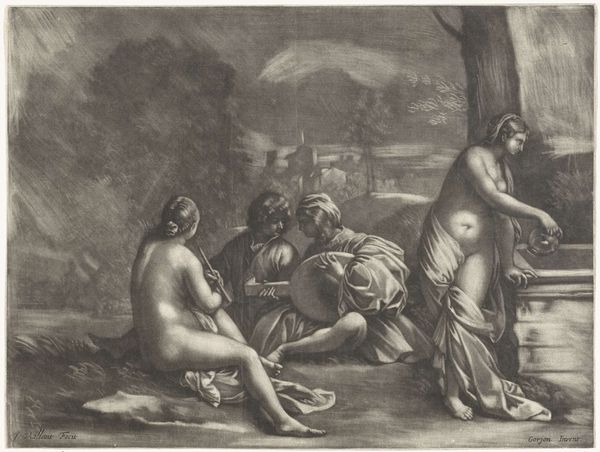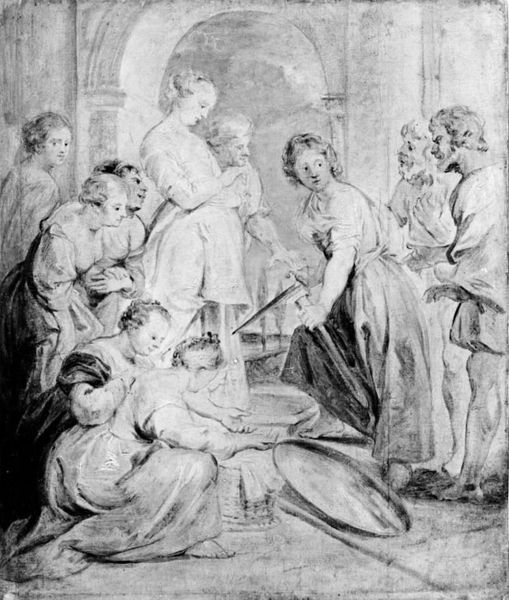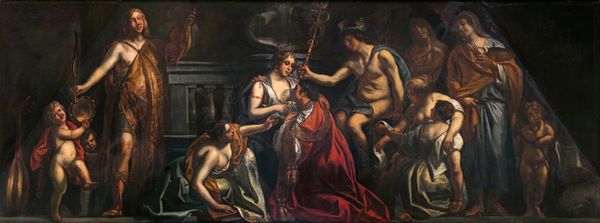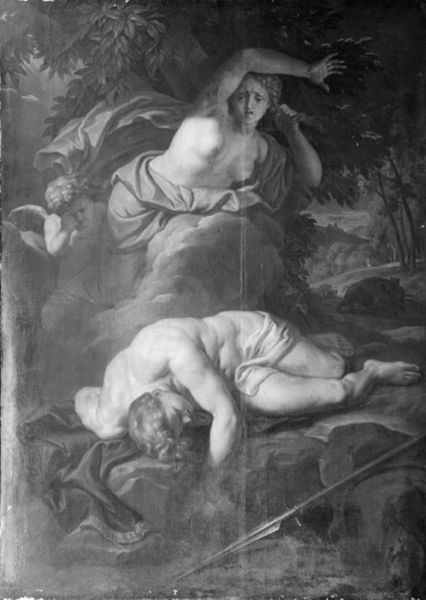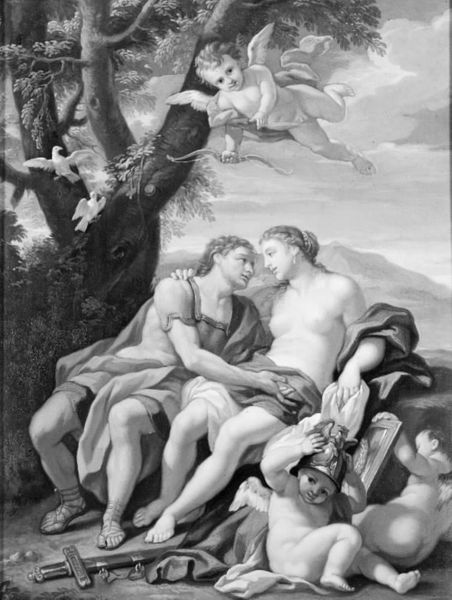
painting, oil-paint
#
allegory
#
baroque
#
painting
#
oil-paint
#
black and white
#
history-painting
#
monochrome
#
nude
#
monochrome
Dimensions: 54 cm (height) x 45 cm (width) (Netto)
Curator: Welcome. We’re standing before a 17th-century painting, “A Pagan Sacrificial Feast.” The artist is, alas, unknown. Editor: My immediate impression is one of subdued drama, almost a theatrical monochrome. It feels more like a staged tableau vivant than a lively sacrifice. Curator: Let's consider the material construction. The oil paint is handled in a way that blurs lines, lending an ethereal quality despite the brutal subject matter. The artist makes heavy use of shading, almost certainly achieving certain visual qualities and special effects due to layering choices with the oil paints themselves, but sadly, that also hinders our present-day perspective on finer detail, making us struggle with seeing all the brushstrokes that must have gone into this work. Editor: Absolutely, and I think that sense of ethereality ties into the symbols. See how the draped cloth overhead gives a canopy, evoking ancient rites and sacred groves, while the vessels below likely imply ritualistic acts. And notice that theatrical mask resting below and to the right. This object placement gives the viewer the impression of a dark and theatrical mood with a hint of pagan sacrificial rites taking place, maybe some sort of celebration. Curator: I find it fascinating how the material elements—the monochrome palette, the obscuring darkness—potentially speak to the historical context. Were these depictions done cautiously due to societal pressure, or as intentionally vague illustrations with political and historical ties and commentary? Editor: Or maybe, the obscured, nearly obscured, detail and monochrome color palette serve to hint at something unknowable and sinister, not unlike the experience and ideas connected with the act of sacrificing a person. The bare skin on full display makes the sacrificial, brutal, possibilities almost unbearable and, like it or not, unforgettable. Curator: Your iconographic interpretation is very compelling, framing how social anxieties might have manifested in the creation and, frankly, subsequent consumption of these artworks. Thinking about it from this angle suggests just how such allegories functioned and flourished. Editor: And focusing on the material handling enriches our view as to not just what the painterly choices represent to us now, but also what may have stood to the painter as they mixed their oils in real time, bringing pagan myths into focus—offering this modern perspective, and more questions. Curator: Indeed, pondering the means of this 17th century image's production does give insight into what making and understanding imagery involved at the time. Editor: And by investigating the symbolic visual rhetoric we begin to uncover narratives that have persisted through time, and in ways the modern viewer, if ready and prepared, can understand as well.
Comments
No comments
Be the first to comment and join the conversation on the ultimate creative platform.
